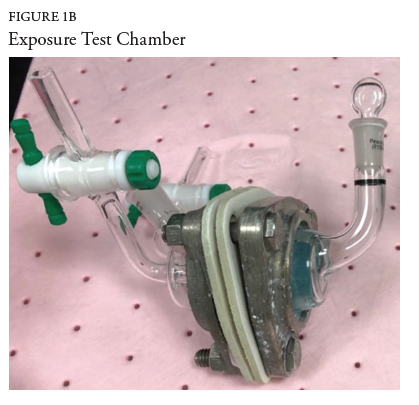1. Wiencek K, Bedenbaugh M. Decontamination of hazardous drug residues from stainless steel using a sporicidal disinfectant. ASHP 2019 Mid-Year Conference (cited 2022 May 16). Available from: https://midyear.ashp.org/-/media/midyear-conference/docs/2019/2019-MCM-Professional-Poster-Abstracts. 2019.
2. Lambert B. Polymers in Medical Applications, Rapra review reports. Oxford; New York: Pergamon; 2001.
3. Breukels O, van der Gronde T, Simons-Sanders K, Crul M. Antineoplastic Drug Contamination on the Outside of Prepared Infusion Bags. Int J Pharm Compd. 2018;22(4):345-9. PubMed PMID: 30021191.
4. Siderov J, Kirsa S, McLauchlan R. External Surface Contamination of Cytotoxic Admixtures: Caveat Emptor. Journal of Pharmacy Practice and Research. 2011;41(3):181-2. doi: https://doi.org/10.1002/j.2055-2335.2011.tb00856.x
5. Crauste-Manciet S, Sessink PJ, Ferrari S, Jomier JY, Brossard D. Environmental contamination with cytotoxic drugs in healthcare using positive air pressure isolators. Ann Occup Hyg. 2005;49(7):619-28. Epub 20050826. doi: 10.1093/annhyg/mei045. PubMed PMID: 16126757.
6. Hon CY, Teschke K, Chu W, Demers P, Venners S. Antineoplastic drug contamination of surfaces throughout the hospital medication system in Canadian hospitals. J Occup Environ Hyg. 2013;10(7):374-83. doi: 10.1080/15459624.2013.789743. PubMed PMID: 23668810.
7. Schierl R, Masini C, Groeneveld S, Fischer E, Bohlandt A, Rosini V, et al. Environmental contamination by cyclophosphamide preparation: Comparison of conventional manual production in biological safety cabinet and robot-assisted production by APOTECAchemo. J Oncol Pharm Pract. 2016;22(1):37-45. Epub 20140916. doi: 10.1177/1078155214551316. PubMed PMID: 25227229.
8. Soteriades ES, Economidou SC, Tsivitanidou A, Polyviou P, Lorimer A, Katodritis N, et al. Environmental assessment of cytotoxic drugs in the Oncology Center of Cyprus. PLoS One. 2020;15(3):e0216098. Epub 20200305. doi: 10.1371/journal.pone.0216098. PubMed PMID: 32134912; PubMed Central PMCID: PMC7058296.
9. Sessink PJ, Leclercq GM, Wouters DM, Halbardier L, Hammad C, Kassoul N. Environmental contamination, product contamination and workers exposure using a robotic system for antineoplastic drug preparation. J Oncol Pharm Pract. 2015;21(2):118-27. Epub 20140223. doi: 10.1177/1078155214522840. PubMed PMID: 24567041.
10. Vyas N, Turner A, Clark JM, Sewell GJ. Evaluation of a closed-system cytotoxic transfer device in a pharmaceutical isolator.
J Oncol Pharm Pract. 2016;22(1):10-9. Epub 20140729. doi: 10.1177/1078155214544993. PubMed PMID: 25073678.
11. ASTM Standard F739-20. Standard test method for resistance of protective clothing materials to permeation by hazardous liquid chemicals. Philadelphia, PA: ASTM American Society for Testing and Materials. 2020.



